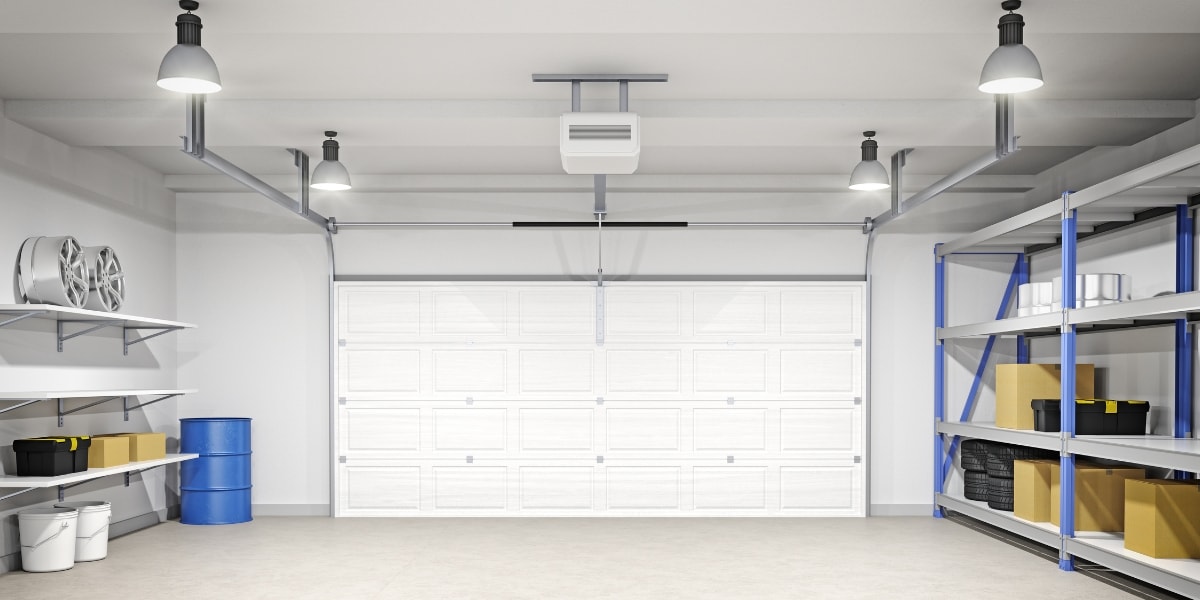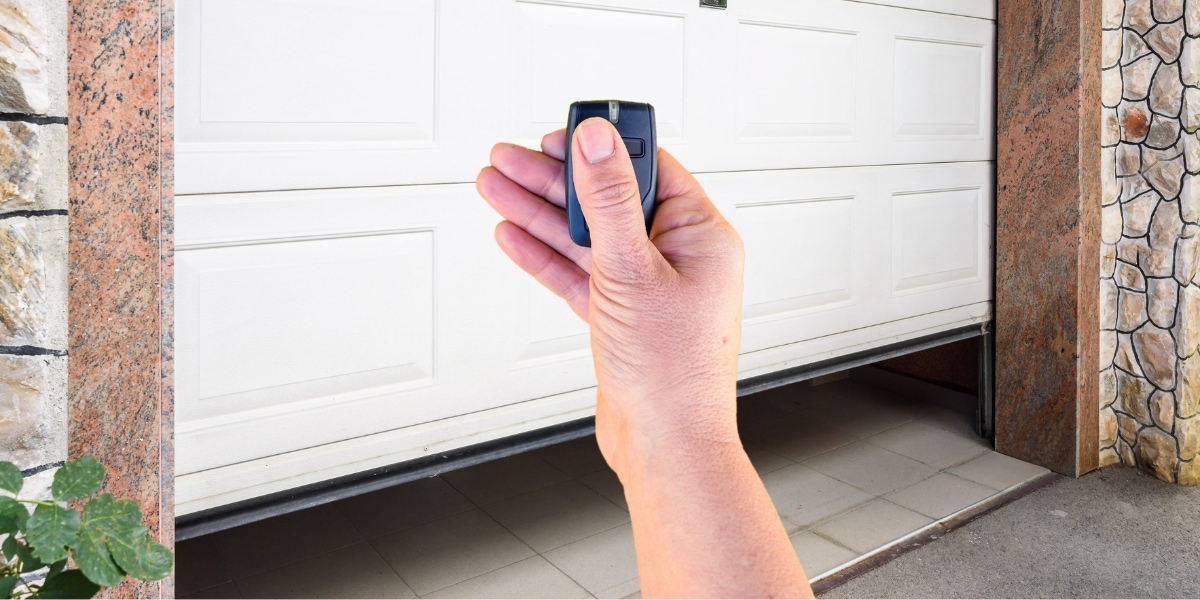Home garage automation has evolved dramatically from the old days of managing your garage door only using a wall-mounted switch. Modern smart garage door openers and controllers provide a new level of convenience, remote monitoring, and integration with other connected home devices.
This guide provides a comprehensive overview of the options for upgrading your garage with cutting-edge innovative technology. We’ll cover topics like:
– The main types of intelligent garage automation systems
– Considerations by garage type to find optimal solutions
– Installation and setup – both DIY and professional
– Security recommendations for networked systems
– Troubleshooting common issues
– Integrating garage automation with gate systems
– Cost comparisons of DIY kits versus pro installation
Top Benefits of Smart Garage Automation:
| Benefit | Description |
| – | – |
| Remote Access and Control | Check status or open/close from anywhere with phone apps |
| Notifications and Monitoring | Get alerts about unexpected activity |
| Automation | Program garage to respond to triggers like time of day, weather, or vehicle arrival |
Upgrading to intelligent access and remote control can make managing your garage more convenient and enhance home security. This guide details everything you need to successfully select, set up, and benefit from an intelligent garage system.
Main Types of Smart Garage Automation Systems
You’ve got choices when it comes to smartening up your garage access! There are a few main options, from integrated smart openers to simple plug-in modules. Your route depends on your garage setup, how tech-savvy you are, and your budget. We’ll break down the key categories available:
Smart Garage Door Openers
These are complete garage door opener systems with built-in smart connectivity and controls. Many major garage door opener brands like LiftMaster and Genie now offer integrated innovative opener models.
The main perks of innovative opener systems:
– Specifically designed from the ground up to be connected and automated
– Often quieter, smoother, and more feature-packed than older openers
– Single integrated system – no need to attach third-party add-on add-ons
However, retrofitting an older manual garage door can be pricey. However, paying more for intelligent capabilities can be worth it if you’re already in the market for an opener replacement.
Most smart openers include handy features like:
Remote monitoring apps – Check if your garage is open or closed in real-time from anywhere. Keep track of that garage door status again!
Activity notifications – Set your mind easily with instant alerts about unexpected motion. Need to close the door? The app will let you know immediately to take action.
Voice control integration – Use voice commands with Google Assistant, Alexa, and Siri to open or close the door hands-free. Just say, “Alexa, ask MyQ to complete the garage.”
Customizable automation – Set schedules, geo-fencing triggers, and more. For example, program your garage to close automatically at 10 pm every night or open when you drive up.
Vehicle integration – High-end models can sync directly with your car’s infotainment system allowing remote commands from the driver’s seat.
While pricey, integrated smart openers require the least amount of hassle. Everything works together right off the shelf.
Retrofit Modules for Existing Openers
If your current garage door opener is still humming along fine, retrofit add-on devices can help grant it smarts.
Small controller modules mount onto your opener and connect to door sensors to enable app control. Most attach using basic wiring or adhesive strips – handy even for novices. Leading options like MyQ work with major opener brands.
Benefits of these retrofit systems include:
- Cheaper than replacing the entire opener
- Simple 5-30 minute “click-in” installation
- Bring voice control and remote access to old openers
Limitations to note:
- Physical performance remains unchanged – old motors won’t magically improve
- Some wiring or hardware modifications may be needed in rare cases
- wifi signal strength impacts reliability
Retrofit controller module packages cost $40-$150, depending on capabilities. Or opt for an inexpensive plug-in wifi range extender if needed.
Adding innovative features to a functioning opener you already own keeps costs down. Installing a module takes fundamental tools and a few minutes in most garages.
Cloud-Connected Garage Hubs
A third smart route comes in the form of compact wall-mounted smart hubs like the Nexx Home Base. These act as Garrett controllers that consolidate and connect devices.
Think of it like a central router for your garage. The hub independently links things like:
- Your opener
- Door sensors
- Extra features like cameras or leak detectors
- Voice assistants
- Smartphones
With everything connected to one hub, advanced automation automation can be set up like:
If the garage door is open after 11 pm, turn on the camera and alert my phone
Streamlining multiple gadgets through a single hub allows tighter control and responses. However, the hardware costs more upfront, normally $200+. Multi-device support usually requires a paid subscription plan after the first year.
An intelligent hub lays the foundation if you’re building a highly connected garage with security cameras, climate monitors, voice access, and more.

Considerations By Garage Door Type
Before selecting any innovative garage solution, your specific garage door’s design and mechanism must be profile. The door type changes installation requirements. Common options include:
Sectional roll-up doors – Most common. Made of pivoting horizontal panels lifting into ceiling space.
- Smart openers and retrofit modules compatible.
- You may need to turn off automatic locking for functionality.
Single panel swing doors – Traditional side-hinged one piece. Swings out/up manually.
- Require alternate mounting of sensors. Hub is positioned differently.
- Usually need professional adjustment for automation.
Roll-up doors – Resemble overhead warehouse doors. Lift vertically and roll into a coil.
- Require heavy-duty opener due to weight.
- Sidetrack sensors are needed over the stacking area.
Tilt doors – The entire panel tilts into garage ceiling space.
- Present sensor positioning challenges.
- Conversion kits add cost.
Cost Comparisons
Budget plays a key role. Here’s a general price range overview of garage automation options:
| Type | Hardware Cost | Installation | Subscription |
| – | – | – | – |
| Basic Retrofit Modules + Sensors | $50-$150 | DIY | None |
| Integrated Smart Door Openers | $150-$500+ | Often professional required | None |
| Multipurpose Garage Hubs | $200-$300 | DIY to professional | $5-$10 monthly |
Retrofit modules provide the most affordable path to entry for app control and voice access. Integrated smart openers feature more excellent structural enhancements. Both can typically be handled as DIY projects. Garage hubs cater more to tech enthusiasts with home automation networks.
Compatibility with Gate Systems
For homes with both garages and gated driveways, you may be wondering – *can I connect my garage automation with my motorized gate access?**
The answer is yes! Many modern smart garage door openers and controllers provide integration tools to sync up with gate systems. Consolidating controls offers conveniences like opening your gate automatically when arriving home.
Gate Compatibility Considerations
- Most smart garage door systems connect via apps or voice assistants like Alexa. This enables easy joint automation by using routines and triggers.
- Bluetooth-Bluetooth or wifi connectivity allows direct communication between the garage controller and motorized gate when in range.
- An intermediate hub may be needed depending on your configuration for advanced functions. Smart home hubs like Samsung Smart. Things provide a unified platform.
- Joint automation requires correctly positioning arrival sensors to avoid opening the gate too early. Precise tuning is essential for both security and avoiding traffic jams!
Common Automation Examples
Connecting your garage and gate opens creative options like:
- Open gate and garage when driving up to home for convenient single-button access via car remote
- Close both after leaving for added security and remote monitoring
- Receive custom alerts if the garage door is open but the gate is closed after 11 pm for additional monitoring
- Save energy by closing the garage at sunset each day – and if temperatures dip below freezing, send an alert to bring items inside
The convenience of joint garage and gate automation makes coming and going simpler. Just drive up, push a button, and both conveniently open for access. And close behind you!
Installing and Setting Up Smart Garage Systems
Once you’ve selected the right brilliant garage solution, it’s time for the fun part – getting everything hooked up!
We’ll cover the critical steps to installing and connecting your shiny new gadgets to get your automated garage up and running.
DIY vs Professional Installation
First decision – *are you comfortable tackling a DIY garage upgrade, or would you prefer to hire a seasoned pro?*
For many handy homeowners, DIY brilliant garage installs are entirely doable. But it depends on your skill level.
When DIY Smart Garage Installation Works Well:
- If you have wired a light fixture or installed a garage door opener before
- For basic retrofit modules and sensors
- For pole-mount gate openers that don’t require heavy wiring
- Following detailed manuals and online video tutorials
Reasons to Consider a Professional:
- If the installation requires extensive electrical work
- For structural modifications to garage framing or doors
- Hardwiring a built-in wall-mount smart hub
- For liability protection and manufacturer warranty qualifications
Take it slow and double-check double-check alignments. Be sure to complete testing steps before active operation.
Connecting Devices and Testing Automation
The fun, techy part begins once the hardware is securely installed – getting everything linked up.
To connect devices like sensors and voice assistants:
- Create user accounts in supporting apps
- Link accounts like Google Home if enabling voice access
- Sync devices to home network wifi
- Assign devices to rooms/zones
- Connect automation triggers like schedules
Next comes verifying those snazzy automations work right.
When testing automation automation, sequences to check:
- Manual opener controls still function normally
- wifi connectivity solid – no dropouts
- Sensors trigger properly when doors open/shut
- Notifications and alerts activating correctly
- Voice commands opening and closing smoothly
- Schedules and geo-fences triggering as planned
Be bold and tweak settings and positioning during testing. For example, adjust:
- Sensor AlignmentAlignment
- wifi extender placement
- Automation trigger thresholds like notification delays
- Activity Zones if motion alerts are too sensitive
Testing is key before fully deploying your automated environment. Validate security cameras have no blind spots. Check voice commands at different distances. Tune things for optimal functionality.
Troubleshooting Common Issues
Of course, the occasional hiccup might need some troubleshooting with any complex gadgetry.
If you are running into problems, here are everyday things to check:
- Review indicator lights on the hub. Flashing status codes point to issues.
- Reboot the controller and reconnect to the wifi
- Toggle permissions like location access if geo-fences are not triggering
- Adjust activity zones for accurate motion detection
- Verify sensors are aligned with unobstructed pathway
- Check for wireless interference from other electronics
- Inspect that all wiring connections are fully secure
- Revisit network pairing procedures if devices disconnect
- Update firmware if available for potential bug fixes
Stay calm and methodically rule out potential culprits with testing. Get your brilliant garage back in gear!
Security and Safety Recommendations
Adding network connectivity introduces potential online vulnerabilities that don’t exist with old-fashioned manual garage doors.
New attack vectors require thoughtful defense measures beyond just a strong password. Don’t let that scare you! Reasonable precautions will keep your automated garage access secured.
We’ll overview the steps to implement innovative security on Day 1 with any new garage system.
Network and Data Security
As with any Internet-enabled device, the first line of defense is wifi security:
- Change default wifi passwords
- Enable WPA2 or WPA3 encryption on your wireless router
- Use a unique SSID, not simply the default network name
- Disable remote administrative access if not needed
- Utilize MAC address filtering to limit connections
Remember – video feeds from connected cameras could be intercepted if your network is compromised. Enhance wifi protections accordingly.
Staying vigilant ensures your home automation suite works reliably when needed most. Test often and redundantly across infrastructure layers.
The Future of Smart Garage Technology
Smart garage tech continues advancing quickly. Like your smartphone, expect continually evolving capabilities even after installation. Exciting innovations on the horizon include:
Predicted Advancements
- Improved voice recognition – More natural conversational commands beyond preset phrases
- Enhanced vehicle integration – Direct syncing with onboard navigation and telemetry
- Expanded sensor support – Connecting leak detectors, HVAC monitors, and more
- AI-assisted monitoring – Smart image recognition identifying suspicious activities or items
- AR-guided installation – Step-by-step visualization instructions projected over the actual garage
- Predictive upkeep – Receiving maintenance alerts based on operational telemetry
Evolving artificial intelligence and augmented reality will unlock more possibilities.
Frequently Asked Questions
Let’s wrap up with answers to some common questions about intelligent garage systems.
What are the best intelligent garage systems for cold weather climates?
Look for cold-rated motors and insulated doors when selecting hardware. Temperature swings degrade circuits and batteries faster while freezing rain can obstruct sensors. Consider tips like:
- Seek openers rated for -20°C/-5°F operation
- Enclose control boards inside weatherproof junction boxes
- Position antennae lower to avoid heavy icicle buildup
- Mount cellular hotspots as a backup for wifi outages
- Use door insulation seals to protect boards with silicone
How do I ensure my smart garage system is secured against hacking?
Security revolves around robust wifi protections and limiting network exposure. Essentials include:
- Incorporate a strong firewall with active intrusion monitoring
- Hide your home wifi SSID instead of broadcasting openly
- Change default credentials to randomized passwords
- Avoid exposing control apps beyond your private LAN
- Set up VPN tunnels for added encryption
What are some examples of useful automation I can set up?
Customizing triggers tailored to your needs makes things more convenient:
- Open the garage 30 minutes before your typical arrival time from work
- Sound alarm and close garage if an unexpected opening occurs after 11 pm
- Flashlight notifications into the house if someone exits the garage outside
- Shut the garage at dusk to avoid letting bugs inside
- Auto-close after being open for 10 minutes as a fail safe against forgetting
Conclusion
And there you have it – everything you need to know about smartening your garage access! We covered the full spectrum spanning:
- Primary system types – Integrated openers, retrofit add-on add-ons, smart hubs
- Key features like remote monitoring, voice controls
- What to consider regarding installation complexity
- Recommended security guidelines for network-connected hardware
- The exciting future of automated garages
This guide gave you confidence about options for upgrading garage automation with modern conveniences. We aimed to detail both capabilities and limitations openly. Let us know if you have any other questions on your automation journey!


